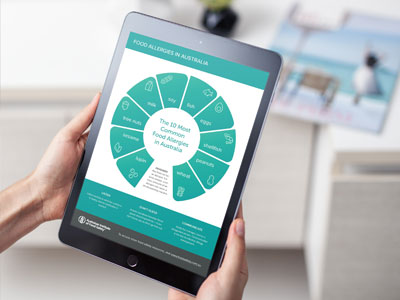.jpg?width=820&height=462&name=Adobe%20Express%20-%20file%20(77).jpg)
The World Health Organization (WHO) has delayed publication of its updated global food-borne disease estimates until early 2026. The new timeline means that Australia, and other countries worldwide, will have to wait a little longer for the most comprehensive update on food-borne illness since 2015.
Why the delay?
According to WHO, the postponement comes after an extended consultation process with member states.
“The official consultation with WHO member states, during which each country had the opportunity to review and comment on its national estimates, was completed this summer, and we are now including additional national input to refine the estimates further. So, the process to finalise the estimates is already well underway,” a WHO spokesperson said.
The updated figures were originally due in late 2025, but WHO confirmed that “unforeseen changes” made that timeline “no longer feasible”. The organisation now expects to release the final data set in the first quarter of 2026.
What will the new WHO report cover?
The forthcoming estimates are being developed by the Foodborne Disease Burden Epidemiology Reference Group (FERG) - WHO’s technical advisory team for this project.
FERG is analysing infection data from 2000 to 2021 across 42 food-related hazards at national, regional and global levels. These hazards range from bacteria and parasites to viruses and selected chemicals such as arsenic, cadmium and lead.
The updated report will also include new pathogens like entero-aggregative E. coli (EAEC) and rotavirus, reflecting advances in surveillance and laboratory diagnostics over the past decade.
What does this mean for Australia?
Australia’s food-safety framework is closely linked to international data standards. WHO’s estimates help guide policy decisions, training priorities and resource allocation across the food industry.
Without the new figures, regulators and educators will continue relying on older 2015 data - when WHO estimated that unsafe food caused more than 600 million illnesses and 420,000 deaths globally each year.
While Australia’s own surveillance programs remain robust, the updated global data will allow more accurate comparisons between regions and a clearer understanding of emerging risks.
For example, shifts in food-borne pathogens due to climate change or international trade patterns could influence national training and inspection priorities.
What is the broader global impact?
Beyond public health, the delay affects economic and policy planning. The World Bank estimates that food-borne illness costs low- and middle-income countries about $172 billion (AUD) each year in lost productivity and medical expenses.
For many governments, updated WHO estimates provide the evidence needed to justify continued investment in prevention - something that remains crucial even as reporting timelines move.
The next step
The updated global food-borne disease estimates are now expected to be released in early 2026. When released, they’ll give public-health authorities, educators and food businesses a clearer picture of where the greatest food-safety challenges lie - and how to reduce their impact.
Until then, as WHO notes, the refinement process is underway and “already well advanced.”
In the meantime, food businesses don’t need to wait for new global data to strengthen their safety practices. Staying compliant with current standards - and ensuring staff are properly trained - remains the most effective way to prevent food-borne illness and protect public health.
The Australian Institute of Food Safety (AIFS) provides practical, up-to-date training and resources to help individuals and businesses stay ahead of emerging risks. To stay informed about the latest developments in food safety, explore more of our recent blogs.
Frequently Asked Questions
Q. When will WHO publish the new food-borne illness estimates?
A. WHO says the report is on track for release in the first quarter of 2026.
Q. What’s being updated?
A. The new data set covers 42 hazards from 2000–2021, including bacteria, viruses, parasites and selected chemicals.
Q. How can the new WHO report help Australia?
A. The WHO’s food-borne illness figures help national authorities and training providers set priorities for food safety education and risk management.
Q. Are existing food safety standards still valid?
A. Yes. The delay affects data reporting, not the fundamentals of food handling safety.About the author
Bethany Gibson
With over 10 years’ experience in hospitality training and assessment, Bethany Gibson - now Training Operations Manager at the Australian Institute of Food Safety - uses her passion for hospitality education to help others strengthen food safety knowledge and confidence across the industry.




